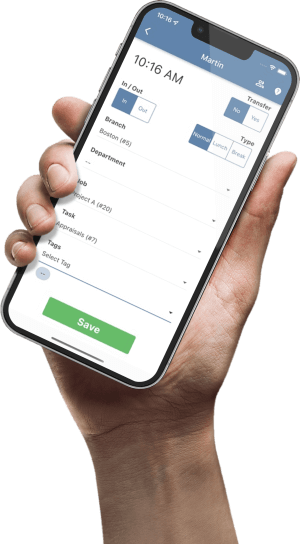Free Vermont Payroll Tax Calculator

Vermont Payroll Tax Calculator (Step-by-Step)
Understanding your paycheck is crucial, and our Vermont Payroll Tax Calculator simplifies the process. Follow these easy steps to get an accurate estimate of your net pay:
Step 1: Enter Your Location and Filing Status
- Country: Ensure “United States” is selected. (This is pre-filled.)
- Province/State: Choose “Vermont” from the dropdown menu. (This is pre-filled.)
- Federal Filing Status: Select your current federal filing status (e.g., Single, Married Filing Jointly, etc.) from the dropdown. This reflects how you file your federal taxes.
- Federal Allowances: Enter the number of federal allowances you are claiming. This number affects the amount of federal income tax withheld from your paycheck. (Use your W-4 form as a guide.)
- Vermont Filing Status: Choose your current Vermont state filing status from the dropdown. It may be the same as your federal status, but confirm based on your state tax situation.
- Vermont Withholding Allowances: Enter the number of Vermont withholding allowances you are claiming. This number affects the amount of Vermont state income tax withheld from your paycheck. (Refer to Form W-4VT for guidance.)
- Annual Pay Periods: Select how often you receive your paycheck (e.g., Bi-Weekly (26), Weekly, Monthly) from the dropdown. This is essential for accurate annual calculations.
- Gross Wage / Pay Period: Enter your total earnings before any deductions for the pay period. This is your gross pay.
- Pay Date: Select the pay date using the calendar tool. This is for your reference and does not affect the tax calculations.
Step 2: Input Your Pay Information
- Annual Pay Periods: Select how often you receive your paycheck (e.g., Bi-Weekly (26), Weekly, Monthly) from the dropdown. This is essential for accurate annual calculations.
- Gross Wage/Pay Period: Enter your total earnings before any deductions for the pay period. This is your gross pay.
- Pay Date: Select the pay date using the calendar tool. This is for your reference and does not affect the tax calculations.
Step 3: Calculate Your Taxes
- Carefully review the calculated results.
- If you need to make changes, adjust the input fields and click “Calculate” again.
- To start a new calculation with different parameters, click the “New Calculation” button.
Important Notes:
- This calculator provides estimates based on the information you provide and current Vermont tax rates and regulations.
- Actual tax amounts may vary based on individual circumstances, additional deductions (e.g., pre-tax benefits, healthcare), and any changes in tax laws.
- Keep your W-4 form and Form W-4VT updated to ensure accurate tax withholding.
Found our Free Vermont Payroll Tax Calculator useful? Bookmark and share it.

Vermont State Income Tax (SIT) Withholding Rates (2025)
| Filing Status | Taxable Income Bracket | 2025 Income Tax Rate / Calculation |
|---|---|---|
| Single / MFS* | $0 - $3,825 | 0.00% |
| Single / MFS* | $3,825 - $53,225 | 3.35% of excess over $3,825 |
| Single / MFS* | $53,225 - $123,525 | $1,654.90 + 6.60% of excess over $53,225 |
| Single / MFS* | $123,525 - $253,525 | $6,294.70 + 7.60% of excess over $123,525 |
| Single / MFS* | $253,525 or greater | $16,174.70 + 8.75% of excess over $253,525 |
| Married Filing Jointly / QW** | $0 - $11,475 | 0.00% |
| Married Filing Jointly / QW** | $11,475 - $93,975 | 3.35% of excess over $11,475 |
| Married Filing Jointly / QW** | $93,975 - $210,925 | $2,763.75 + 6.60% of excess over $93,975 |
| Married Filing Jointly / QW** | $210,925 - $315,475 | $10,482.45 + 7.60% of excess over $210,925 |
| Married Filing Jointly / QW** | $315,475 or greater | $18,428.25 + 8.75% of excess over $315,475 |
* MFS = Married Filing Separately
** QW = Qualifying Widow(er)
Note: Use official VDT withholding methods (Publication GB-1210) for precise calculations based on W-4VT allowances.
Setting Up Your Payroll Foundation in Vermont
Before you pay your first employee, you need to lay the groundwork by registering with the government and setting up reporting systems. These steps are non-negotiable for legally employing workers in Vermont.
Get Your Federal Employer Identification Number (FEIN)
Every U.S. business hiring employees needs an FEIN from the IRS. This unique nine-digit number is your federal tax ID. You’ll need it for filing federal employment taxes (Forms 941, 940, W-2), opening business bank accounts, and registering with Vermont state agencies. Applying online via the IRS website is usually the quickest way.
Register with Vermont State Agencies
You’ll need to register with two key Vermont agencies:
Vermont Department of Taxes (VDT):
- Why? To handle state income tax withholding. If you pay wages subject to Vermont income tax, you need a withholding account.
- How? Register online via the Vermont Secretary of State’s portal or the VDT’s
myVTaxsystem. You can also use Form BR‐400 (Application for Business Tax Account) via mail/fax. Verify your account is active for withholding even if registered for other taxes. - Outcome: You’ll receive a Vermont Withholding Account Number, essential for all state withholding filings and payments.
Vermont Department of Labor (VDOL):
- Why? To manage State Unemployment Insurance (SUI). You’re generally liable if you pay $1,500+ in quarterly wages or have at least one employee for 20+ weeks a year (different rules apply to agricultural employers).
- How? Register online through the VDOL website, typically via the Employer Registration Application or Employer Online Services portal.
- Outcome: You’ll get a Vermont UI Account Number and an initial SUI tax rate (usually 1.0% for new, non-construction businesses).
Report Your New Hires
Separate from taxes, you must report all newly hired and rehired employees (returning after 60+ days) to the VDOL. This helps enforce child support and prevent fraud.
- Deadline: Within 10 calendar days of the employee’s first day of work for pay.
- What to Report: Employer’s legal name, address, FEIN; Employee’s full name, address, SSN; Employee’s date of hire.
- How? The preferred method is online via the VDOL’s New Hire Online Application. Electronic filing is mandatory if you submit reports for more than 10 new hires. Limited paper options (Form C-61 or a custom form with all required data) exist for those filing 10 or fewer reports and unable to file electronically. Using a W-4 copy is acceptable only under specific conditions.
Getting these registrations and the new hire process right from the start is crucial for avoiding immediate compliance issues.
State Income Tax (SIT) Withholding
You must withhold Vermont SIT if you withhold federal income tax. This applies to Vermont residents (wherever they work) and non-residents working in Vermont.
- Employee Form (W-4VT): Strongly recommend having every employee complete Vermont’s Form W-4VT in addition to the federal W-4. Federal W-4 calculations don’t always align with Vermont’s tax laws, potentially causing incorrect withholding if used alone. The W-4VT helps employees determine the right number of Vermont allowances. Use the most current version.
- Calculation: Use the official, annually updated Vermont withholding tables from the VDT, factoring in the employee’s wages, filing status (from W-4VT), and allowances. Vermont has progressive tax rates (see Table 1). Supplemental wages (like bonuses) have specific withholding rates (generally 22% up to $1M, 37% above).
- Remote Work & Residency:
- Out-of-State Employers: Withholding isn’t required until an employee works in Vermont for 30 days.
- VT Residents Working Remotely: If an employee lives and works remotely from Vermont, their entire income is subject to VT withholding, regardless of your company’s location.
- Non-Residents Working in VT: Withhold only on wages earned for services performed physically within Vermont.
- 183-Day Rule: Working in Vermont for 183+ days in a year can classify someone as a resident for tax purposes, potentially requiring withholding on all income.
- Deposits & Filing (myVTax): Your deposit frequency (Quarterly, Monthly, Semiweekly) is assigned by VDT, usually matching your federal schedule.
- Mandatory E-Filing/Paying: Most businesses must file returns (WHT-436, WHT-434) and make payments electronically via the
myVTaxportal. This applies if you file 10+ W-2s/1099s, are a semi-weekly depositor, use a payroll service, or remitted over $100k in VT withholding last year. Paper filing is rare. - Deadlines: Vary by frequency (see Table 3). Monthly payments are due by the 25th of the next month (except Jan, due Feb 23rd). Semiweekly follows the federal Wed/Fri rule.
- Mandatory E-Filing/Paying: Most businesses must file returns (WHT-436, WHT-434) and make payments electronically via the
- Reconciliation:
- Quarterly (Form WHT-436): Due the 25th after each quarter-end (Apr 25, Jul 25, Oct 25, Jan 25). Reconciles quarterly withholding and also reports CCC and HCFCA (see below). Required for ALL employers.
- Annual (Form WHT-434): Due Jan 31st. Transmits employee W-2s/1099s to the VDT and reconciles the year’s withholding. Mandatory e-file via
myVTaxif 10+ W-2s/1099s.

Vermont Payroll Tax Due Dates Summary
| Tax Type | Reporting Form(s) | Frequency | Due Dates |
|---|---|---|---|
| SIT Withholding | WHT-436 (Quarterly) | Quarterly (All) | Apr 25, Jul 25, Oct 25, Jan 25* |
| SIT Withholding | WHT-434 (Annual) | Annual (All) | Jan 31* (Transmits W-2s/1099s) |
| Payment (myVTax) | — | Quarterly, Monthly, or Semiweekly | Varies by schedule (see above) |
| SUI | C-101 / VITWS (Quarterly) | Quarterly | Apr 30, Jul 31, Oct 31, Jan 31* |
| CCC | WHT-436 (Quarterly) | Quarterly Reporting; Payment mirrors SIT | Reporting: Apr 25, Jul 25, Oct 25, Jan 25*. Payment: Same as SIT. |
| HCFCA | WHT-436 (Quarterly - Part III) | Quarterly | Apr 25, Jul 25, Oct 25, Jan 25* |
*Adjusted for weekends/holidays.

Key Vermont Payroll Forms
| Form | Name | Purpose | Frequency/Requirement |
|---|---|---|---|
| W-4VT | Employee's Withholding Allowance Certificate | Determine VT SIT allowances. | Recommended annually/on change. Keep 4 yrs post-termination. |
| WHT-434 | Annual Withholding Reconciliation | Annually reconcile SIT & transmit W-2s/1099s to VDT. | Annually (Due Jan 31). ALL employers. Mandatory e-file if 10+. |
| WHT-436 | Quarterly Withholding Recon., CCC & HCFCA Report | Quarterly reconcile SIT; Report/Pay CCC; Report/Pay HCFCA. | Quarterly (Due Apr 25, etc.). ALL employers. Mandatory e-file most. |
| HC-1 | HCFCA Worksheet | Calculate quarterly HCFCA liability. | Quarterly (as needed). Keep 3 yrs; DO NOT SUBMIT. |
| HC-2 | Declaration of Health Care Coverage | Document coverage status of employees declining employer plan. | Annually from decliners. Keep 3 yrs; DO NOT SUBMIT. CRITICAL. |
| C-101 / VITWS | Quarterly Wage & Contribution Report (SUI) | Report quarterly wages & calculate SUI tax. | Quarterly (Due Apr 30, etc.). Mandatory e-file via VITWS. |
| New Hire Report | (Online Portal / Form C-61) | Report new/rehired employees to VDOL. | Within 10 days of hire. Mandatory e-reporting if >10 reports. |
State Unemployment Insurance (SUI)
Funded entirely by employers, SUI provides temporary benefits to eligible unemployed workers.
- Liability: Triggered by meeting wage ($1,500/quarter) or employment duration (1 employee/20 weeks) thresholds.
- Taxable Wage Base (2025): $14,800 per employee per year (up from $14,300 in 2024).
- Contribution Rates:
- New Employers: Usually 1.0% (higher rates for new construction businesses).
- Experienced Employers: Receive an “experience rate” (ranging from 0.4% to 8.4% depending on the active rate schedule – see Table 2) based on their history of unemployment claims (benefit ratio). Rates are recalculated annually. It typically takes 2+ years to get an experience rate.
- Rate Schedules: Vermont uses five different rate schedules. The active schedule depends on the health of the state’s UI Trust Fund. This means your rate can change even if your claims history is stable, based on overall economic conditions.
- Reporting & Payment:
- Frequency: Quarterly.
- Method: File Quarterly Wage and Contribution Report (Form C-101) electronically via the Vermont Internet Tax and Wage System (VITWS).
- Deadlines: April 30, July 31, October 31, January 31.
- FUTA Credit: Timely SUI payments are essential to claim the maximum federal FUTA tax credit (up to 5.4%), significantly lowering your effective federal unemployment tax.
- Reimbursable Option: Eligible non-profits and government entities can opt to reimburse the state dollar-for-dollar for benefits paid instead of paying quarterly taxes. This can be risky if layoffs occur.
Child Care Contribution (CCC) Tax
Effective July 1, 2024, this mandatory tax funds Vermont’s Child Care Financial Assistance Program.
- Employer Rate: 0.44% of all employee wages subject to state income tax withholding. There is no annual wage cap.
- Optional Employee Withholding: Employers may (but are not required to) withhold up to 0.11% (25% of the total tax) from employee wages to offset the employer cost. You decide whether and how much to withhold (can vary by employee). This requires clear communication and payroll system configuration.
- Reporting & Payment: Reported and paid quarterly with your SIT withholding via
myVTax, using Form WHT-436. The same deadlines and rules apply. - Employee Impact: No separate filing for employees. Withheld amounts appear on Form W-2 (likely Box 14).
- Self-Employed: Pay 0.11% annually with their state income tax return.
Health Care Fund Contribution Assessment (HCFCA)
This assessment applies to some employers to support state healthcare costs.
- Liability Trigger: Applies only if you employ more than four (4) full-time equivalent (FTE) uncovered employees working in Vermont in a quarter. If you have 4 or fewer, you report zero liability but still must file.
- Assessment Rate: A fixed dollar amount per quarter for each uncovered FTE above the threshold of four. This rate is adjusted annually (e.g., it was $167.02 in 2019, $184.42 in 2020). Check VDT guidance (Form HC-1 instructions) for the current quarterly rate.
- Calculating FTEs & Uncovered Status:
- FTE Calc: Sum total quarterly hours for all uncovered employees (cap each at 520 hrs/qtr). Divide total by 520. Subtract 4. Round down. This is the number of assessable FTEs.
- “Uncovered” Definition: An employee is uncovered if they:
- Aren’t eligible for employer-sponsored coverage (unless PT/seasonal with other coverage – see below).
- Are eligible but decline and have no coverage, have Medicaid, have VT Health Connect coverage, OR fail to return Form HC-2.
- Are Part-Time (<30 hrs/wk) or Seasonal (<=20 weeks) and have no coverage, have Medicaid, or fail to return Form HC-2.
- “Covered” Definition (Hours NOT Counted): An employee is covered if they:
- Enroll in an employer plan (meeting minimum standards) to which the employer contributes any amount.
- Decline the employer plan but attest on Form HC-2 to having other qualifying coverage (NOT Medicaid/VT Health Connect).
- Are PT/Seasonal and attest on Form HC-2 to having other qualifying coverage (NOT Medicaid).
- Age Exclusion: Employees under 18 during the quarter are excluded entirely.
- Form HC-2 (Declaration of Health Care Coverage): CRITICAL FORM!
- Requirement: You must get a completed, signed Form HC-2 annually (or upon status change) from every employee offered but declining coverage.
- Impact: Failure to have a valid HC-2 for a declining employee legally forces you to count them as uncovered, potentially triggering or increasing the HCFCA assessment, even if they have other insurance. Diligent collection is key.
- Retention: Keep HC-2 forms for 3 years (do not submit to VDT unless requested).
- Reporting & Payment:
- Form: Calculate using the HC-1 worksheet (keep for 3 years, don’t submit). Report the final HCFCA amount quarterly on Form WHT-436, Part III.
- Due Dates: Same as WHT-436 (Apr 25, Jul 25, Oct 25, Jan 25).
- Payment: Electronically via
myVTaxwith WHT-436. - Zero Liability Reporting: Still must file WHT-436 Part III with “zero” if not liable.
Federal Payroll Tax Essentials
Alongside Vermont rules, you must handle federal taxes.
A. Federal Income Tax Withholding (FITW)
Withhold federal income tax based on the employee’s Form W-4 (use the current version) and IRS Publication 15-T methods.
B. FICA Taxes (Social Security & Medicare)
These fund Social Security and Medicare. Both have employer and employee components.
- Social Security: 6.2% employee + 6.2% employer = 12.4%. Applies up to the annual wage base limit ($176,100 for 2025).
- Medicare: 1.45% employee + 1.45% employer = 2.9%. Applies to all wages (no limit).
- Additional Medicare Tax: Withhold an extra 0.9% from employee wages exceeding $200,000/year. No employer match. (Employee liability depends on filing status).
C. Federal Unemployment Tax Act (FUTA)
Paid only by the employer to fund unemployment administration.
- Liability: Triggered by paying $1,500+ in quarterly wages or employing someone in 20+ weeks.
- Rate & Base: Gross rate is 6.0% on the first $7,000 paid per employee annually.
- FUTA Credit: You can get a credit up to 5.4% for paying state SUI taxes on time. This makes the effective FUTA rate 0.6% ($42/employee/year) for most Vermont employers.
- Credit Reduction: Vermont is not currently a credit reduction state, so timely SUI payers should get the full credit.
D. Federal Tax Deposits & Reporting
- Deposits: Mandatory via Electronic Funds Transfer (EFT), typically using the free EFTPS system.
- Deposit Schedules (FITW & FICA): Assigned by IRS (Monthly or Semi-Weekly) based on past liability. Follow IRS rules (Pub 15). A $100k+ next-day deposit rule applies if liability spikes.
- Deposit Schedule (FUTA): Deposit quarterly if liability exceeds $500. Due end of the month after quarter-end.
- Reporting Forms:
- Form 941: Reports FITW & FICA quarterly. Due end of month after quarter-end (Apr 30, Jul 31, Oct 31, Jan 31).
- Form 940: Reports FUTA annually. Due Jan 31st.
- Form W-2 & W-3: W-2 reports employee annual wages/taxes. W-3 summarizes W-2s. File both with the Social Security Administration (SSA), not IRS, by Jan 31st. Provide W-2 copies to employees by Jan 31st. E-filing with SSA required if 10+ W-2s.

Federal Payroll Tax Rates & Wage Bases (2025)
| Tax Type | Employee Rate | Employer Rate | Total Rate | 2025 Wage Base Limit | Notes |
|---|---|---|---|---|---|
| Social Security | 6.2% | 6.2% | 12.4% | $176,100 | Limit adjusted annually. |
| Medicare | 1.45% | 1.45% | 2.9% | No Limit | Applies to all covered wages. |
| Additional Medicare | 0.9% | 0.0% | 0.9% | Wages > $200,000 | Employee only; no employer match. |
| FUTA (Gross) | 0.0% | 6.0% | 6.0% | $7,000 | Employer only. Net rate usually lower. |
| FUTA (Net Rate)* | 0.0% | 0.6% | 0.6% | $7,000 | Assumes max 5.4% credit (VT eligible if SUI timely). |

Vermont Minimum Wage History (Recent Years)
Staying Compliant with Vermont Wage and Hour Laws
Beyond taxes, follow VDOL rules on pay, hours, and workplace conditions. If state and federal laws differ, the one more beneficial to the employee applies.
- Minimum Wage (2025): $14.01 per hour (higher than federal $7.25).
- Tipped Minimum Wage (2025): $7.01 per hour cash wage (50% of full minimum) for employees earning $120+/month in tips. Employer must ensure cash wage + tips equals at least $14.01/hour. If tips fall short, employer pays the difference. Both rates adjust annually (Jan 1).
- Overtime: Pay non-exempt employees 1.5x their regular rate for hours over 40 in a workweek (aligns with federal FLSA).
- Exemption Salary Threshold: To potentially qualify for the Executive, Administrative, Professional (EAP) exemption, employees must meet duties tests and be paid a salary of at least $684 per week ($35,568 per year). Note: A planned federal increase to higher levels was blocked by courts in late 2024 and is NOT in effect. Use the $35,568 threshold. Misclassification is risky.
- Pay Frequency: Default is weekly. Bi-weekly or semi-monthly is allowed only with advance written notice to employees. Pay within 6 days after the pay period ends.
- Payment Methods: Cash, check, direct deposit (with written consent), payroll card (with written consent).
- Final Paychecks:
- Termination: Pay within 72 hours of discharge.
- Quit: Pay on the next regular payday for that period (or following Friday if no regular schedule).
- Includes: All wages earned + overtime. Vacation payout required only if policy/agreement exists. Handle unclaimed wages per state escheat laws.
- Breaks: Provide “reasonable opportunity” for meals and restroom use (not defined duration). If short rest breaks (<20 min) are given, they must be paid (per FLSA). Provide reasonable, private (non-bathroom) break time for nursing mothers up to one year postpartum (per federal PUMP Act & VT law).
- Pay Stubs: Provide written/printed stub each pay period unless employee consents in writing to electronic delivery.
- Deductions: Only mandatory (taxes, garnishments) or voluntary (benefits) with written authorization. Deductions for goods/services need written consent and cannot drop pay below minimum wage. Follow legal limits for garnishments.
- Mandatory Workplace Posters: Display required state (VDOL, VDH) and federal (US DOL, EEOC) posters conspicuously. Failure can lead to fines. See Table 7 for a checklist.
Keeping Accurate Payroll Records
Maintaining detailed payroll records is legally required by federal (FLSA, IRS) and state (VDOL, VDT) agencies.
- What to Keep: Employee info (name, SSN, address, etc.), time records (hours worked daily/weekly), wage calculations (rate, straight time, overtime), deductions, net pay, pay dates, tax filings (941, 940, W-2, W-3, WHT-436, WHT-434, C-101), deposit records, employee forms (W-4, W-4VT, HC-2), I-9s, etc.
- How Long:
- Core Payroll/Tax Records (IRS, VDOL UI): At least 4 years after tax due/paid date or employee separation.
- FLSA Wage Computation Records (time cards, etc.): 2 years.
- FLSA General Payroll Records: 3 years.
- Vermont HC-1 Worksheet & HC-2 Forms: 3 years.
- Vermont General Wage/Hour Records: 2 years (3 years post-termination).
- Form I-9: 3 years after hire or 1 year after termination, whichever is later.
- OSHA Logs: 5 years (if required).
- Storage: Keep records secure, organized, and accessible (paper or electronic). Electronic records must be reproducible. Use secure destruction methods when retention period ends.
Given the overlapping rules, keeping core tax and payroll records for at least four years is a good general practice, but always track specific retention periods for forms like I-9s and HC-2s.
Choosing How to Process Payroll in Vermont
You have several options for actually running your payroll.
A. Doing It Yourself (DIY) / Manual Payroll
Calculating everything by hand using spreadsheets or paper.
- Pros: Lowest direct cost, full control.
- Cons: Extremely high risk of errors (costly penalties!), very time-consuming, huge compliance burden (esp. with VT specifics like CCC/HCFCA/HC-2), doesn’t scale well, full liability falls on you.
- Viability: Generally not recommended for Vermont businesses due to complexity, unless you have 1-2 employees with simple pay, deep/current payroll expertise, and ample time.
B. Using Payroll Software (Like TimeTrex!)
Automated platforms handle calculations, tax filings/deposits, pay stubs, and record-keeping.
- Pros: Significantly reduces errors, saves massive amounts of time, improves compliance (software stays updated on rates/rules), cost-effective compared to penalties or full outsourcing, provides reports, often integrates with accounting/time tracking.
- Cons: Requires accurate data input, involves subscription costs, has a learning curve, may offer less personalized strategic advice than an accountant.
- Viability: Excellent option for most small to mid-sized Vermont businesses. Verify the software handles VT specifics (CCC, HCFCA, myVTax/VITWS integration).
C. Hiring an Accountant / CPA Firm
Payroll processing as part of broader financial services (bookkeeping, tax strategy).
- Pros: Deep expertise ensures accuracy/compliance, provides strategic financial/tax advice, can represent you before IRS/VDT, saves owner time.
- Cons: Often the most expensive option for routine payroll, potentially less streamlined than software for basic runs, availability might vary.
- Viability: Best for businesses needing integrated financial strategy, complex tax planning, or personalized handling beyond standard payroll processing.
D. Partnering with a Professional Employer Organization (PEO)
Co-employment model where PEO handles payroll, taxes, benefits admin, and HR compliance.
- Pros: Access to better/cheaper benefits (health, retirement), comprehensive HR outsourcing, shifts some compliance burden/risk to PEO, can save on admin costs.
- Cons: Higher cost (per employee fee/% payroll), loss of direct control over HR/benefits, potential data ownership issues if switching, requires culture fit, must use a PEO licensed in Vermont.
- Viability: Good for businesses prioritizing robust benefits to attract talent and wanting to outsource most HR functions, comfortable with the co-employment model and cost.
Invest in Getting Vermont Payroll Right
Managing payroll in Vermont requires diligence. You need to master state income tax withholding (using W-4VT), SUI (and its impact on FUTA), the CCC tax, and the administratively intensive HCFCA (especially Form HC-2 collection). Add federal rules, wage/hour laws (like the current $35,568 overtime threshold), pay timing, new hire reporting, and multi-agency record-keeping, and it’s clear that compliance demands focus.
Staying informed about changes from VDT, VDOL, IRS, and US DOL is crucial. The risks of non-compliance – penalties, interest, legal issues, and damaged employee trust – are simply too high for small businesses to ignore.
Choosing the right payroll method is key:
- DIY: Highly risky in Vermont; generally advised against.
- Payroll Software: A strong, efficient, and compliant solution for most Vermont SMBs. Ensure it handles state specifics.
- Accountant/CPA: Valuable for strategic financial advice integrated with payroll.
- PEO: An option for robust benefits and full HR outsourcing, if the model fits.
Payroll isn’t just paperwork; it’s a critical business function. Whether you invest in robust software like TimeTrex, engage expert professionals, or (very carefully) manage it in-house, dedicating the necessary resources to ensure accuracy and timeliness is fundamental to operating legally and sustainably in Vermont. Regular internal checks can help catch errors early. Invest wisely in your payroll process – it’s an investment in your business’s health and future.

Add Your Heading Text Here
| Agency | Poster Topic | Required For |
|---|---|---|
| VDOL | Unemployment Insurance, Pregnant Workers, Sick Time | All Employers |
| VDOL | Min. Wage, Parental/Family Leave, Sexual Harassment | Most Employers |
| VDOL | Workers' Comp Notices | Employers subject to WC law / Size thresholds |
| VDH | Workplace Smoking | All Employers |
| US DOL | FLSA (Fed Min Wage), OSHA, USERRA, EPPA | Most Employers |
| US DOL | FMLA | Covered Employers (50+ employees) |
| EEOC | EEO is the Law / Know Your Rights | Most Employers w/ 15+ employees (lower for some) |
Other Payroll Tax Calculators
Loading other available calculators...
Disclaimer: The content provided on this webpage is for informational purposes only and is not intended to be a substitute for professional advice. While we strive to ensure the accuracy and timeliness of the information presented here, the details may change over time or vary in different jurisdictions. Therefore, we do not guarantee the completeness, reliability, or absolute accuracy of this information. The information on this page should not be used as a basis for making legal, financial, or any other key decisions. We strongly advise consulting with a qualified professional or expert in the relevant field for specific advice, guidance, or services. By using this webpage, you acknowledge that the information is offered “as is” and that we are not liable for any errors, omissions, or inaccuracies in the content, nor for any actions taken based on the information provided. We shall not be held liable for any direct, indirect, incidental, consequential, or punitive damages arising out of your access to, use of, or reliance on any content on this page.
Trusted By
Trusted by 3.2M+ Employees: 21 Years of Service Across Startups to Fortune 500 Enterprises
Join our ever-growing community of satisfied customers today and experience the unparalleled benefits of TimeTrex.










Strength In Numbers
Join The Companies Already Benefiting From TimeTrex
Time To Clock-In
Start your 30-day free trial!
Experience the Ultimate Workforce Solution and Revolutionize Your Business Today
- Eliminate Errors
- Simple & Easy To Use
- Real-time Reporting

Saving businesses time and money through better workforce management since 2003.
Copyright © 2025 TimeTrex. All Rights Reserved.
